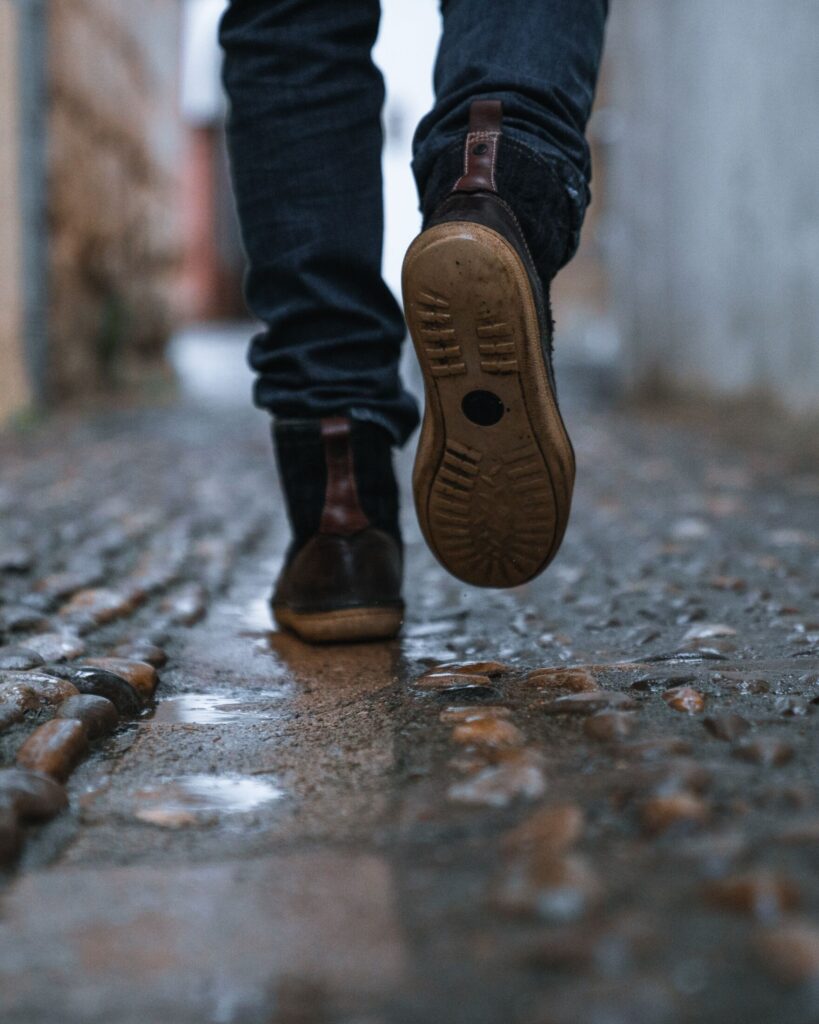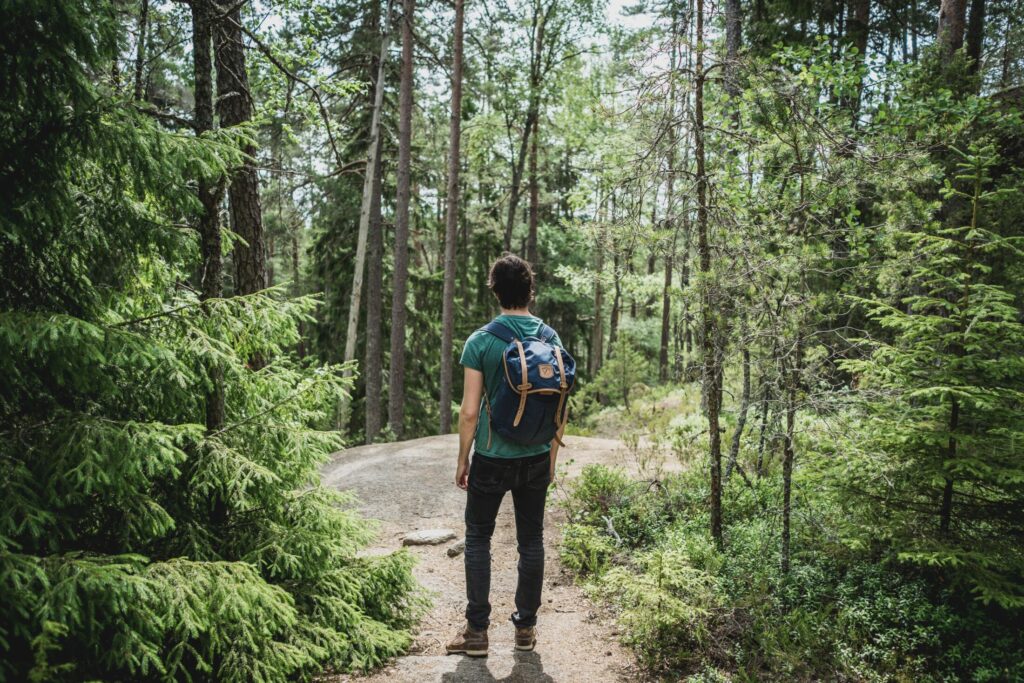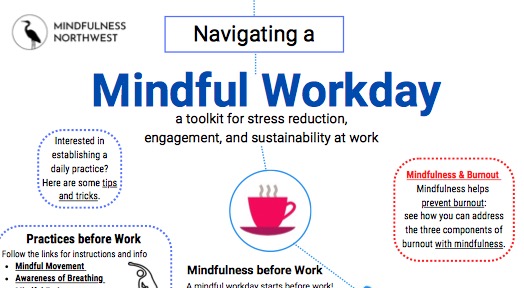
Photo by Alejandro Luengo
If you’ve completed a Mindfulness Northwest multi-week course or attended a meditation retreat, you have likely practiced walking meditation. It is a foundational meditation practice, but at first glance, might be viewed as simply a break from sitting. Certainly, during long periods of practice, walking meditation offers a change of body position. But walking meditation is not just a “filler.” Walking meditation is an opportunity to bring mindfulness into daily life, bring mind and body together, and deepen practice.
The grounding power of walking was made clear to me last month. I was out on a bike ride and took a tumble. My left baby finger bore the brunt of my fall resulting in a break and dislocation. I was angry – here I was out exercising and felt punished for it! The salve of time has settled my frustration and helped me appreciate what is right with my body. I can walk. At the same time, I watched the movie, “The Cloud Never Dies”, about the life of the late Zen master, Thich Nhat Hanh. The movie inspired me to read more of his writings, including his short book, How to Walk (2014). My finger is still angry and swollen, but Thich Nhat Hanh’s interesting comments about walking meditation changed my focus. Instead of my injury being front and center, I can marvel at my ability to walk, connect to the earth, and be here, finding gratitude and joy in this basic, functional, and remarkable skill.

Photo by Tyler Nix
These are some attributes of walking meditation outlined in How to Walk (direct quote is indicated).
Every step we take during the day presents an opportunity to connect to the earth, to our body, and to this present moment.
If we bring a ‘beginner’s mind’ to walking, we can relive the wonder of being able to walk that we experienced as a toddler, and now often take for granted.
“When you walk, arrive with every step. That is walking meditation. There’s nothing else to it,” (page 9).
Walking is something many of us do every day; hence, walking meditation can be practiced every day. While in sitting meditation, the sensations of breathing might be used as an anchor of attention. During walking meditation, however, the anchor of attention is the sensations of the body walking.
For some of us, walking is not an option. Sitting in a chair or lying down may be our body’s daily posture. Not to worry. Walking meditation is also accessible from a chair or a bed with a leg motion similar to the pawing of a cat against the ground. If we can feel our feet on the floor or our heels against the bed, we can try shifting our hips from side to side while also kneading our feet or heels into the floor or bed, one after the other. This rhythmic movement simulates walking, engaging our body and mind in the practice.
When beginning walking meditation practice, it is helpful to slow your normal walking pace. This allows you to feel the movements of your body with each step, though be kind and careful: keeping one’s steps small and at a slow pace can challenge balance.

Photo by Patrick Schneider
Here is how we often first describe walking meditation in our classes:
1. Find an area or ‘lane’ that is long enough for you to take five or six easy steps.
2. Stand at one end of the lane, allow your arms to rest in a comfortable way (I like to fold my arms). Feel your feet firmly on the floor. Take an easy breath and feel the full sensation of the body breathing.
3. Begin walking on your lane or path, taking small, slow steps.
4. Feel the motions of your joints in your legs. Feel the changing pressure on your feet. Feel each foot contact the floor.
5. When you reach the end of your lane, pause and turn around. Take an easy breath, connect to your body, and walk back to where you started.
6. When you find your mind has wandered away from feeling the sensations of walking, pause in your path. Take a breath, feel your feet, ground in the body, and then resume walking.
1. Visualize a lane or path about as long as you are tall.2. Take an easy breath and feel the full sensation of the body breathing.3. When you’re ready, begin kneading your feet or heels against the floor or bed with a slow and steady pace, while feeling the body’s motions, the changing pressures in the feet and legs, and your contact with the floor or bed.4. As you imagine reaching the end of your lane or path, follow steps 5 and 6 above.
This practice, as with any meditation practice, can be done for a few minutes, or for some period of time. Walking meditation may be a first-choice practice for those who find it difficult to stay quiet in sitting meditation. Please note there is no hierarchy of practice – walking meditation affords the same benefits as sitting meditation: focus, awareness, and mindfulness of this present moment.

Photo by Krzysztof Kowalik
Walking meditation has the potential to become an integral part of your daily life. Is there a hallway or path you walk or roll through several times a day? If so, perhaps you can designate it your ‘walking meditation’ path. Then each time you traverse the area, commit to doing so with awareness. Feel your feet, body, and breath as you walk or roll your chair across the floor. Says Thich Nhat Hanh: “It is possible to enjoy every step we make, not only during walking meditation, but at any time, whenever you need to move from one place to another place, no matter how short the distance is,” (page 25).
Join me in remembering to walk or knead the feet or heels a little more slowly during the day, whenever you can. In that way, you may invite more opportunity to enjoy contact with the earth, the function of your body, and all that is here right now.
Beth Glosten, M.D., is an instructor with Mindfulness Northwest. Want even more creative ideas to incorporate into walking meditation practice? Look for Beth’s follow up article (Part 2) in September.
This article was part of our Practice Letter newsletter. If you’d like to receive this monthly publication in your Inbox, please sign up here.

